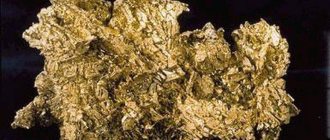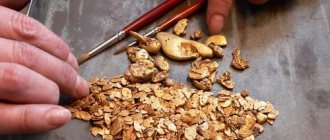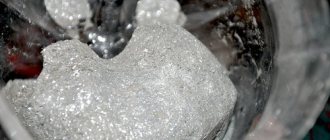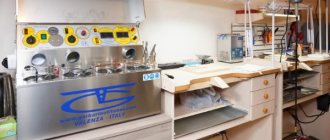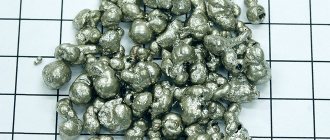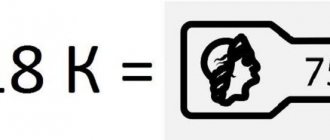Introductory information
Papyrus was found in the tomb of the Egyptian city of Thebes at the beginning of the last century. It contained 111 recipes, among which were those that considered the possibility of obtaining silver and gold. But, alas, this was aimed at creating fakes or coating other, less expensive objects with precious metals.
You may be interested in: Naphthenic acid - features, properties, application and formula
Nevertheless, this document showed that alchemy, even in ancient centuries, captured the minds of people thirsting for easy money. Spreading through the Egyptians and Greeks, it was able to gradually take over all of Europe. The greatest practical dawn came in the Middle Ages. At that time, not only scientists, but also state and church officials were interested in alchemy. Thus, in almost every imperial palace one could find “specialized” people who were supposed to receive gold in order to improve the state of the treasury. It was widely believed that this could be done with the help of the philosopher's stone.
Extraction of precious metals from lead
Gold and silver dissolved in lead, when zinc is added, form solid intermetallic compounds that float to the surface of the bath in the form of a hard, loose crust - silvery zinc foam.
From the Au-Zn phase diagram, the AuZn compounds are known,
Au3Zn5, AuZn3 with melting points of 725, 644 and 475 ° C, respectively, and from the Ag-Zn-Ag2Zn3 and Ag2Zn5 system, melting at 665 and 636 ° C. Copper also reacts with zinc, and arsenic makes it difficult to separate the foam, these impurities must be previously deleted.
Zinc is soluble in lead to a limited extent; its excess floats in the form of a solution saturated with lead. Foam is a complex product containing silver, gold, lead and zinc. To enrich it with precious metals and save zinc, it is put into circulation. The first addition at 500° C is the lean skim from the previous boiler. After they have completely melted, the lead is stirred for 20-30 minutes, cooled to 450-480 ° C and the foam is removed.
The second and subsequent zinc additions are given in accordance with metal analyzes for silver and gold. Before each subsequent intervention, the boiler is heated to 450-480, and before removal it is cooled to 340-350 ° C. To remove silver to a content of 3 g/t, three additions of zinc are sufficient, the total consumption of which is about 1% by weight of lead.
Up to 70% of noble metals are transferred into rich foam and it is sent for processing to extract them. The foam contains 5-10% (total of gold and silver), 25% zinc, and the rest lead. The soft scraps that have not yet hardened are loosened by hand and sent for distillation to remove zinc and obtain silver lead.
Distillation is carried out in round three-electrode furnaces with a power of 0.5 MW ( Fig.
.). Graphite electrodes are immersed in the slag covering the alloy bath, which is artificially induced by fusing soda, sand and lime to produce sodium and calcium silicates. The foam is loaded with a mechanical feeder, adding 2-3% fine coke. At a temperature of about 1250° C, up to 90% of the zinc is distilled off, more than half of it is collected in a condenser with a spraying spinner in the form of liquid metal, and the rest is collected with dust. The residue from distillation—silver lead—is released through a siphon; it contains no more than 2% zinc. Liquid zinc from the condenser is cast into pigs and returned for refining.
At the melting temperature, zinc and lead are mixed in all proportions. The vapor pressure above their solution is equal to the sum of the vapor pressures of the components
R
=
р
Zn
+ р
Pb
According to Raoult's law, this is true for ideal liquids, but for real liquids, depending on the sign of the heat of solution, positive or negative deviations are observed, transforming the line of total pressure
Rice.
Diagram of a furnace for distillation of zinc foam:
1 — electrodes; 2
— loading hopper;
3—oven; 4 — rotors spraying liquid zinc; 5—gas duct; 6
- capacitor
into a convex or concave curve (Fig. 2). The diagram of the Pb - Zn system shows the dependence of the boiling point on the composition of the alloy; as the zinc concentration decreases, it increases. Practically at a temperature of 1250°C it is possible to reduce the concentration of zinc in silver lead to only 2%, and in the condensate to obtain at least 10% lead; however, this is not significant: the zinc is returned for lead refining.
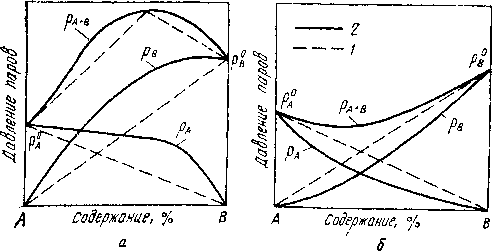
Rice. 2. Dependence of vapor pressure on solution composition:
A
- with a maximum:
b
- with a minimum;
1 - according to Raoult’s law for ideal solutions: 2
- variants of deviations in real solutions
Silvery lead is cupellated - it is oxidized to litharge, and the silver and gold remain in the furnace bath in an alloy called doré metal, from the French d'ore - gold.
The cupellation furnace bath - font - is laid out from magnesite bricks in an iron casing and installed on a trolley, the walls are protected with caissons ( Fig.
. 3). The liquid litharge that floats to the surface of the alloy is gradually released, and new portions of silver lead are loaded into the bath, accumulating gold and silver in it. When the bath is filled with the alloy, the remaining lead is finally oxidized. The small amounts of litharge formed in this case are absorbed into the font. Doré metal is poured into molds and sent to refineries to be separated into gold and silver. Excess zinc from refined lead must be removed and used. Its concentration reaches 0.7%; and the mass in the daily amount of metal at the average modern capacity of enterprises is measured in tens of tons.
In many factories, zinc is disposed of using an alkaline method, like tin, arsenic and antimony; saltpeter is not required; it is easily oxidized by alkali according to the reaction:
Zn + 2NaOH = Na2ZnО2 + H2
proceeding vigorously with the release of heat, to remove the excess of which the reactor sometimes has to be equipped with a water jacket.
Rice. 3 .
Cupellation furnace:
1 — bath (font) on a trolley; 2
— air supply;
3
— nozzle windows;
4
— release of liquid litharge;
5
- chimney
Refining lasts 7-10 hours; 1 ton of zinc consumes 1 ton of NaOH and 0.75 ton of NaCl. The spent melt is granulated, zinc hydroxide forms a suspension, which, after separating the metal beads, is filtered. The solution is evaporated to dryness, the alkali is returned to the head of the process, and the zinc hydroxide is calcined and sold for making paints. The spent zinc is returned by 95%, but in the form of oxide.
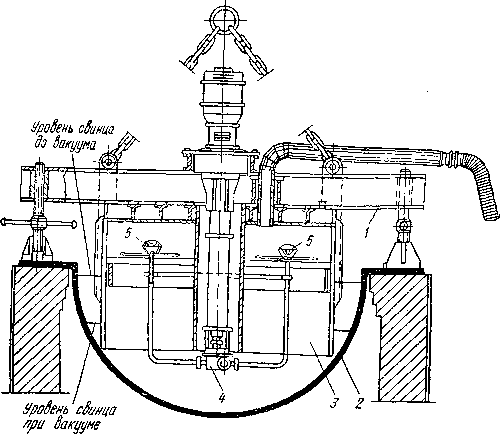
Rice. 4 .
Apparatus for vacuum dezincification of lead:
1 - support frame; 2 —
boiler;
3 — steel glass; 4 -
lead pump;
6
— lead sprinklers with fender discs
Vacuum distillation before alkaline refining allows only 80% of the zinc to be recovered, but in the form of an alloy that is again suitable for lead refining. A device designed for this purpose ( Fig.
. 4) transferred by crane and installed on a regular boiler. A steel bell with a water-cooled bottom, connected to a vacuum pump, is mounted on its frame. A steel pipe runs along the axis of the apparatus, containing the shaft of a lead pump, from which tubes with sprinklers and steel disks at the ends are directed upward.
At 600°C and a residual pressure of about 6.66 N/m2, turn on the pump. Lead from the boiler is fed into the side tubes and sprayed into a vacuum space, and its falling drops are further broken up on steel disks. The large total surface of the metal promotes rapid evaporation
The vapor condenses into large crystals at the bottom of the bell. After 5 hours of work, 0.1% zinc remains in the lead. The apparatus is removed and the condensate (60% Zn and 40% Pb) is chopped off.
Article on the topic Extraction of precious metals from lead
What were they able to achieve in the Middle Ages?
Channel PROGRAMMER'S DIARY
The life of a programmer and interesting reviews of everything. Subscribe so you don't miss new videos.
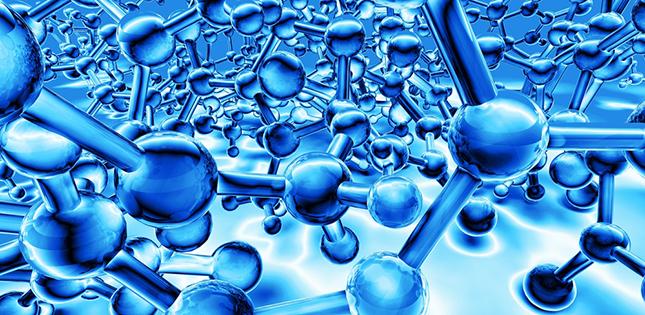
Iron, gold, lead and mercury were considered related metals - that one of them could be transformed into the other. For example, take Lull's recipe. He suggested turning his attention to lead and burning it until the oxide of this metal was obtained. Then it was necessary to heat the resulting substance with sour grape alcohol in a sand bath. The gum obtained from evaporation was distilled. What remained had to be ground on a stone and touched with a hot coal. Then it was necessary to distill the substance again and the result was acetic-lead salt.
What is the value of this connection? In fact, a common chemical reaction is described, namely the distillation of acetic-lead salt. This connection could truly work wonders. Namely, to recover gold from solutions of its salts.
Alchemical research of antiquity and the Middle Ages
The ancient Egyptians were the first to try to obtain a noble metal from lead. At the beginning of the 20th century, a papyrus was discovered in Thebes containing 111 methods for obtaining gold. The recipes found were for the most part not aimed at extracting real metal, allowing the creation of high-quality but short-lived fakes. Subsequently, work on the creation of the noble metal was continued by ancient Greek thinkers and researchers of the Middle Ages. In the 13th-16th centuries, not only scientists, but also statesmen were interested in alchemy. Almost every ruler had his own alchemist, trying to make gold from various metals, including lead, although mercury was especially popular.
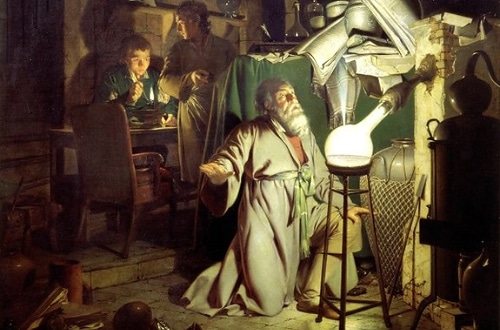
Experiments of ancient alchemists
For a long period, alchemists worked on the creation of the philosopher's stone, among whose legendary abilities was the ability to transform one metal into another. In one of the recipes found in the notes of a certain Lull, the natural scientist is asked to distill vinegar-lead salt. As a result of the manipulations performed, the main component of which was lead and its oxide, products were obtained that reduced gold from solutions of its salts. Thus, gold did not appear out of nowhere, but was simply extracted from a mixture in which it was already contained. Obtaining it in this way was an outright deception, so the question of how to make gold remained relevant.
The first research in the field of obtaining the philosopher's stone belonged to Nicholas Flamel, a French artisan who lived at the beginning of the 14th century. Being a simple copyist of books, he came across a work on alchemy that interested him. The book that fell into his hands was very ancient and in many ways incomprehensible. It took over 22 years to decipher it. During this time, the alchemist fell into despair more than once; as a result, the substance he conceived was created with the help of divine powers that visited Flamel during his pilgrimage to holy places.
In 1382, he managed to create the desired substance and use it to transform the available metal into gold. According to the existing legend, Flamel was revealed not only the secret of transforming gold, but also the secret of longevity. Despite the fact that according to official sources, the alchemist died in 1414, his death is still called into question.
Isaac Newton also showed a noticeable interest in alchemy in general and the possibility of extracting gold in particular. An outstanding scientist devoted more than 30 years of his life to studying this issue, confident that this is not only possible, but will happen in the near future. Fearing that the ability to obtain precious metals from base metals would cause a drop in demand for gold, Newton initiated a bill prohibiting the disclosure of the secrets of alchemical research.
At the beginning of the 17th century, the name of the Scottish nobleman Setonius became quite popular in medieval Europe. During many years of wandering around the world and scientific research, Setonius managed to develop a special red powder, thanks to which the production of gold from lead became feasible. The recipe for the powder was passed from hand to hand for a long time until it was completely lost.
On January 15, 1658, I. K. Richthausen, personal alchemist of Emperor Ferdinand III, transformed lead into gold. This happened in the presence of many witnesses, including members of the imperial family. Work in this direction was continued by Weinzel Seiler; he also managed to obtain metal from lead. The imperial treasury in Vienna contains a medal that was once silver, but became half gold thanks to Seiler's research.
Gold coins made of lead are in the collection of Archduke Kuchelbecker. This miraculous transformation was created by the alchemist Kronemann, who lived at the court of one of the Brandenburg margraves. In 1667, a gold bar made from lead was presented to the public by Dr. Schweitzer. It was possible to extract the metal using a substance that the doctor himself called the philosopher's stone. Unfortunately, the second attempt to obtain it failed and the experience was soon forgotten.
In 1709, the famous alchemist Gomberg managed to extract gold from silver and antimony ore. The discovery greatly inspired his colleagues; against the backdrop of the excitement that arose, attempts to obtain metal from lead continue to be made. Unfortunately, interest in this discovery dried up as quickly as it arose; it was proven that some gold particles were originally present in the ore and therefore the experiment was not pure. And yet, experiments in this direction continued until the beginning of the era of industrialization.
Further development
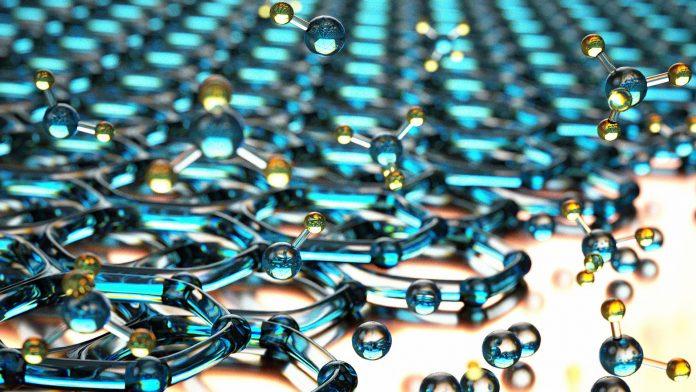
You may be interested in: Ram's horns: meaning and symbolism
Alchemy flourished until the mid-seventeenth century. It was not possible to obtain gold from lead, as well as from other materials. Although chemistry was studied quite well. High-ranking officials of that time supported such hobbies, which had a positive effect on the development of applied research. Moreover, many rulers, kings and emperors were themselves alchemists. And many of the transformations they carry out are not deception; the precious metal was simply contained in the original substance and was simply isolated.
But over time, the number of people who believed in alchemy began to decrease. This was greatly facilitated by the fact that the philosopher's stone was declared as a panacea for all diseases. When this did not materialize in practice, people began to doubt alchemy. Although we were not completely disappointed. Many experiments still made it possible to obtain gold. True, this was due to the fact that some natural ores contain this precious metal in a certain amount. Thanks to various chemical reactions it was possible to purify and distill it.
LiveInternetLiveInternet
Alchemy is one of the most ancient and mysterious sciences, which in the modern world is considered the lot of charlatans and scammers. The language of secret symbols has always hidden alchemy from the curiosity of the uninitiated. Its true essence is still not clear to us: for some it is the making of gold, for others it is the discovery of the elixir of immortality, for others it is the transformation of man...
Royal art
Alchemy is the mother of chemistry. It was in alchemical laboratories that sulfuric, nitric and hydrochloric acids, saltpeter and gunpowder, “regia vodka” and many medicinal substances were first obtained.
Medieval alchemists set themselves very specific tasks. One of the founders of European alchemy, Roger Bacon (13th century), writes the following:
“Alchemy is the science of preparing a certain compound, or elixir, which, if added to base metals, will transform them into perfect metals.”
Despite the fact that alchemy was virtually outlawed in Medieval Europe, many ecclesiastical and secular rulers patronized it based on the benefits that the receipt of the “despicable metal” promised. And they not only patronized, but also worked on it themselves. Alchemy has truly become a “Royal Art”.
Elector of Saxony Augustus the Strong (1670-1733), whose claims to the Polish crown required significant financial expenditures, turned Dresden into a real capital of alchemy. To replenish the treasury with gold, he recruited the talented alchemist Friedrich Böttger. How successful Böttger was in the gold field, history is silent.
There were many alchemists in Europe, but only a few became adepts - those who discovered the secret of the philosopher's stone.
In the language of symbols
The origins of alchemy go back to Hermeticism, a teaching that absorbed the traditions of ancient Greek natural philosophy, Chaldean astrology and Persian magic. Hence the mysterious and polysemantic language of alchemical treatises.
For an alchemist, metals are not just substances, but the personification of cosmic order. Thus, gold in alchemical manuscripts turns into the Sun, silver into the Moon, mercury into Mercury, lead into Saturn, tin into Jupiter, iron into Mars, copper into Venus.
The choice of seven celestial bodies is also not accidental. Seven is a sign of completeness and perfection, the highest degree of desire for knowledge and wisdom, evidence of magical power and the keeper of secrets.
The recipe written down in the Hermetic treatises also looks mysterious. The English alchemist George Ripley (15th century), in order to prepare the elixir of the sages, suggests heating philosophical mercury until it turns first into a green and then into a red lion. He advises collecting the resulting liquids, which will result in the appearance of “tasteless phlegm, alcohol and red drops.”
What follows is even more vague:
“The Cimmerian shadows will cover the retort with their dull blanket. It will light up and, soon taking on a magnificent lemon color, will again reproduce the green lion. Make it eat its tail and distill the product again. Finally, my son, rectify carefully and you will see the appearance of flammable water and human blood.”
How to turn a symbolic alchemical word into a living practical reality?
Some tried, taking it literally. For example, Joan of Arc's comrade, the famous Marshal Gilles de Rais, went so far as to kill babies for the sake of young blood, which was believed to be necessary for the success of the Great Work.
To descendants who want to lift the veil of secrets of alchemical texts, the philosopher Artefius writes: “Unhappy fool! How can you be so naive and believe that we will teach you so openly and clearly the greatest and most important of our secrets?” Hermetic symbolism was supposed to forever hide the secrets of adepts from the uninitiated.
Scientists of the 19th century managed to unravel the allegory of the alchemists. What is the "lion devouring the sun"? This is the process of dissolving gold with mercury. Ripley's recipe, which describes the procedure for obtaining acetone, has also been deciphered.
However, chemist Nicola Lemery notes that he did this experiment many times, but never received red drops - a substance that, according to adepts, had the properties of the philosopher's stone. The chemical extract was extracted, but the alchemical miracle did not occur.
Alchemical symbolism is more than a reflection of the chemical process. For example, one of the main alchemical symbols is a dragon swallowing its own tail - the personification of multiple births and deaths.
The symbolic language of sacred texts is addressed not only to technology, but also to all structures of existence, the balance between which can lead to success in alchemical transformations.
Philosopher's Stone
The central element of alchemical teaching is the philosopher's stone or elixir, which can transform base metals into noble ones. It was represented not only in the form of a stone, it could be a powder or liquid. Some adepts left us a recipe for preparing their “Grand Magistery”.
For example, Albert the Great suggests using mercury, arsenic, silver scale and ammonia as components of the philosopher's stone. All this, having gone through the stages of purification, mixing, heating, distillation, should turn into “a white substance, solid and clear, close in shape to a crystal.”
The property of the philosopher's stone was not only the transmutation of metals. Alchemists of the Middle Ages and the Renaissance recognized the elixir’s ability to grow precious stones, enhance the fruitfulness of plants, heal all diseases, prolong life and even grant eternal youth.
The 14th century French alchemist Nicholas Flamel is considered one of those masters who managed to obtain the philosopher's stone. Having become acquainted with the treatise of Abraham the Jew, he spent his whole life deciphering the “key to the Work” left there. And, in the end, he found him, gaining, according to legend, immortality.
The spread of the legend was facilitated by repeated eyewitness accounts who allegedly met Flamel many years after his official death. The opening of the alchemist's grave only strengthened the myth - Flamel was not there.
However, the philosopher's stone should not be considered solely as a material substance. For many adepts, the search for the “Grand Magistery” was akin to finding the truth that could solve the highest task of Hermeticism - the deliverance of humanity from original sin.
Is alchemy a science?
The Church considered alchemy to be a source of superstition and obscurantism. For the poet Dante Alighieri, alchemy is “a completely fraudulent science and good for nothing else.” Even Avicena had a negative view of the Hermetic mysteries, arguing that "alchemists can make only the most excellent imitations, by coloring red metal white - then it becomes like silver, or by coloring it yellow - then it becomes like gold."
Back in the 4th century BC. e. Aristotle wrote that copper, when combined with zinc or tin, forms golden-yellow alloys. Often an alchemical experiment was considered successful when a simple metal only acquired the color of a noble one. However, there is indirect evidence that in their laboratories alchemists were able to produce gold, which in its qualities is in no way inferior to natural metal.
In one of the museums in Vienna, a gold medal is exhibited, the weight of which corresponds to 16.5 ducats. On one side of the medal is engraved the inscription “Golden descendant of a lead parent”, on the other - “The chemical transformation of Saturn into the Sun (lead into gold) was carried out in Innsbruck on December 31, 1716 under the patronage of His Excellency Palatine Carl Philip.”
Of course, the testimony of a noble person cannot guarantee in any way that real gold was not used in the smelting of the medal. However, there are other arguments.
In the 14th century, King Edward II of England ordered the Spanish alchemist Raymond Lull to smelt 60 thousand pounds of gold, providing him with mercury, tin and lead. It is unknown whether Lull was able to cope with the task, however, historical documents indicate that when concluding large trade transactions, the British began to use gold coins in quantities that significantly exceeded the country's gold reserves.
No one knows where the 8.5 tons of gold bars came from in the inheritance of the Holy Roman Emperor Rudolf II (1552-1612). It was later established that the gold of Rudolf II contained practically no impurities, unlike the natural ingots used for minting coins.
Having brought its secrets from time immemorial, the art of alchemy still jealously guards them, probably forever depriving descendants of the opportunity to penetrate into the secrets of the Great Work.
https://www.softmixer.com/2016/03/blog-post_58.htm...ftmixer%2FsIgk+%28SoftMixer%29
First "successes"
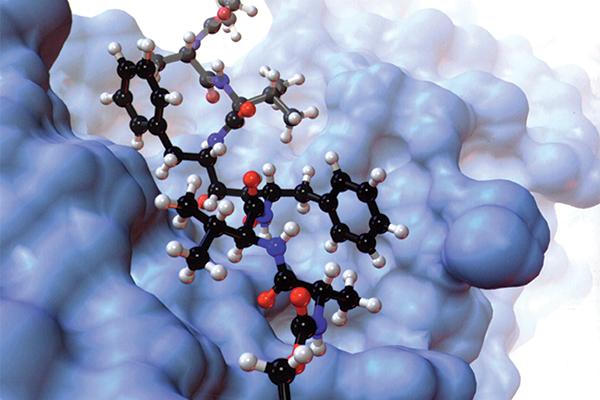
The alchemist Gobmerg was able to obtain gold by melting silver with antimony ore. There was not much precious metal at the output. But the alchemist believed that the secret of transforming metals had been revealed to him. True, with an accurate analysis, it simply turned out that a certain percentage of gold was there from the very beginning.
The pharmacist Kappel was able to achieve a similar result in 1783 - he obtained the precious metal from silver using arsenic. This may be solely due to the precipitation of lead iodide. And the gold, as you probably guessed, was already in the ore.
With the help of science

After atoms and transformation reactions were discovered, nuclear physicists replaced alchemists. The foundation in this case was laid by Dempster Arthur Jeffrey. By studying mass spectrographic data of the precious metal, the scientist came to the conclusion that there is only one stable isotope - with a mass number of 197. Therefore, if you want to make gold from lead (or transform another similar material), then it is necessary to ensure that the necessary nuclear reaction occurs. It is necessary that it gives the output isotope 197.
You may be interested in: The concept of acceleration. Acceleration formulas for uniformly accelerated linear motion and circular motion. Acceleration of gravity
In 1940, this issue began to be studied in more detail. Experiments were carried out on the bombardment of neighboring elements of the periodic table with fast neutrons. These are platinum and mercury. A year later it was reported that success was achieved using the second material. Gold was obtained. But its isotopes had mass numbers of 198, 199 and 200. Scientists obtained gold, but it existed for a very short period of time. Although from experiments it was concluded that the best starting material is mercury. It is also theoretically possible to obtain gold from lead, but it is much more difficult to implement.
Gold at home
Real or fake? Fake gold plated lead bars (top left and right) look like pirated copies next to real bars (cylindrical and flat) and real gold plated fakes (center)
Last September, one New York gold dealer spent $72,000 on what became his nightmare: counterfeit gold bars. The four 10-ounce counterfeits had all the features of real bars, including the serial number. This is pretty scary when you consider how many people own gold—or think they do.
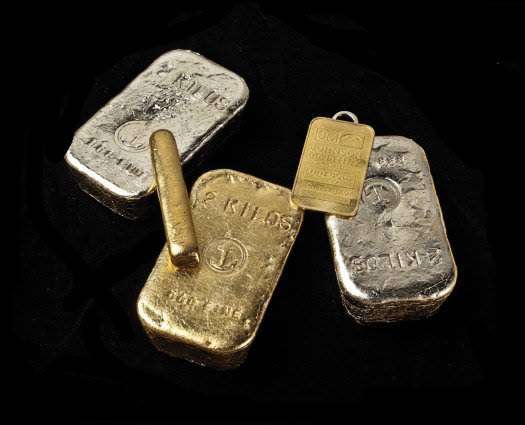
I've been a fan of fake gold ever since writer Damien Lewis included me in his 2007 spy thriller Cobra Gold. My supposed experience in making counterfeit gold was pure fiction, but I am still considered an expert on the subject. I decided it was time to call my own bluff and make some real fake bars.
Instead of a 10-ounce bar, I cast a two-kilogram (4.4-pound) knockoff the size of a Twinkie cake. A cake that weighs over four pounds? Yes, gold has a high density, even more than lead. Counterfeit gold must be the right weight, and there is only one element with the same density as gold that is neither radioactive nor too expensive. This is tungsten, which can cost less than $50 per pound.

A molten mixture of lead and antimony is poured onto a tungsten rod in a graphite mold
To make the fake look convincing, scammers can embed a tungsten rod in gold. The bars will be near perfect weight and drilling shallow holes will reveal only gold. A 2kg bar made this way will cost you about $15,000 and will "cost" around $110,000. Since I had to work within PopSci's modest budget and I'm not a criminal, I kept the materials cost to $200.
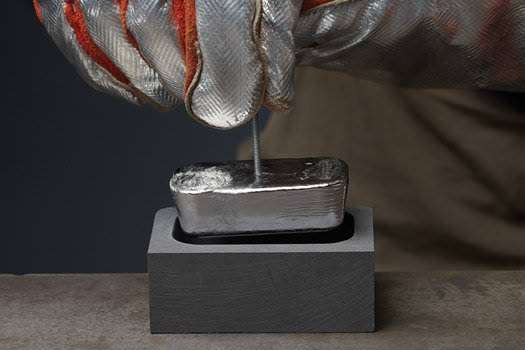
Tungsten rod is used to produce a lead antimony alloy core, then the rod is removed
I coated the tungsten rod with an alloy of lead and antimony, almost as hard as gold. This thing is like gold in the feel in the hand and the sound when tapped. I then coated it with gold leaf to give my bar its signature color and shine.
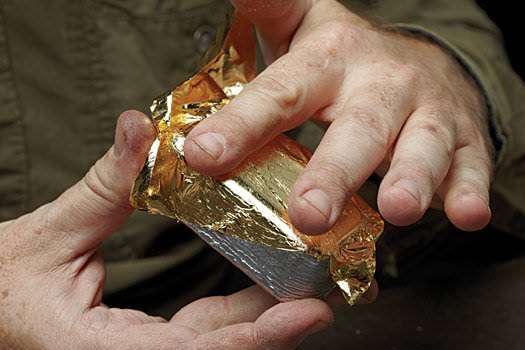
Coating the bar with a film of gold—approximately 4 millionths of an inch thick—gives it its true color.
My fake didn't fool anyone much (the gold plating can be scraped off with your fingernail), but it looks and feels great, even next to my real 3.5 ounce pure gold bar. If, of course, he is real.
Mercury processing
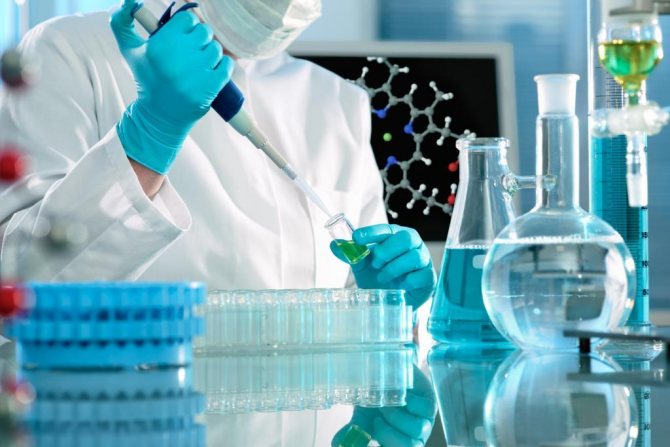
The most suitable for manipulation are materials with mass numbers of 196 and 199. Thus, from 100 grams of mercury you can expect approximately 35 micrograms of gold. It is easy to guess that due to the high cost of nuclear transformations, the price turned out to be much higher than the market price. Therefore, this method has not gained popularity.
Obtaining a stable isotope (gold-197) is theoretically possible on an industrial scale from mercury-197. But such a chemical element does not exist in nature. Although you can also pay attention to thallium-201. The truth here is that the problem is of a different nature - this element does not have alpha decay. Therefore, it is more urgent to obtain the mercury-197 isotope.
It can be obtained from thallium-197 or lead-197. It would seem, at first glance, that the second option is much easier. But even in this way, it is more difficult to obtain gold from lead, because these materials do not exist in nature and must be synthesized through nuclear transformations. That is, it is possible to make precious metal, but it is very difficult and expensive. And so the considered option is the most realistic answer to how to make gold from lead.
Alchemists' Gold: History of Alchemy
Alchemy as the science of the “creation” of gold appeared in the third and fourth centuries BC in Ancient Egypt, but only in the Middle Ages it spread to all European countries.
The goal of the alchemists was to find the so-called. “philosopher’s stone” supposedly if you mix it with silver or mercury and heat it to a high temperature, you will get an ingot of gold. Even such famous scientists as Avicenna, Bacon, Leibniz and Baruch Spinoza were confident in similar results of this process.
Outstanding doctor of the 17th century. Helvetius reported that in 1666 a man came to him with extraordinary knowledge in many sciences. The man gave the scientist a couple of grams of powder, which, according to him, transforms certain metals into gold. In the morning, Helvetius heated tin and poured this powder into the molten metal. “When the mixture cooled, it shone. The whole family went to the jeweler, and he defined it as “gold of the highest standard!” Spinoza found the goldsmith and he confirmed everything that Helvetius said.
In 1648, Emperor Ferdinand III of Austria, pouring a powdery substance provided by the alchemist Richthausen, independently obtained gold from mercury, and a medal with the image of Mercury was made from it. Until the beginning of the 19th century. was in the treasury vault in Vienna.
In 1705, Peikul, who was engaged in alchemy, and several people - witnesses, including the chemist Girn, carried out the transformation and a special medal was knocked out of this ingot.
In Paris in the 14th century. scribe Nicolas Flamel, while doing his work, accidentally discovered an ancient parchment with mysterious symbols depicted on it. Nicolas spent more than 20 years trying to understand these symbols to no avail. He then went to Madrid, and after a couple of years he found a man who deciphered all the signs. After this, Flamel began experimenting and in January 1382 he was lucky!
The famous Edison and the unpredictable Nikola Tesla also tried to find a solution. For several months they secluded themselves in the laboratory and engaged in mysterious experiments. Avoiding overly prying eyes, they drew the curtains tightly, and when leaving the room, they carefully checked the locks. They were irradiated with X-rays, the electrodes of the device were covered with a layer of gold, and the thinnest silver plates.
Chemist Stephen Emmens, who previously invented explosives for mining, told reporters that he has the secret of the “philosopher’s stone.” It is worth noting that the bars were purchased by jewelers after careful analysis. Emmens agreed to speak and demonstrate these processes at the Paris exhibition in 1900, but did not come, and then completely disappeared from view.
A similar fate awaited Professor Adolf Miethe from Germany, who in 1924 announced that he knew the secret and successfully resorted to this method several times.
At this time, a huge number of scammers appeared, using various tricks to deceive gullible citizens. If such a “craftsman” was convicted of fraud, he was threatened with the gallows. And if it was not possible to prove the deception, then the authorities believed that he was connected with evil spirits and he faced life imprisonment in prison. It was difficult to get out of this vicious circle without saving your life, and to carry out such experiments it was necessary to have great courage.
The famous chemist J. Berzelius from Sweden sprouted lettuce leaves hydroponically and watered them only with purified water. After some time, I burned the plants and studied the composition of the ash, it turned out that there was twice as much sulfur in the ash as in the seed! The famous biologist Louis Kervran from France grew oats using the same method and it turned out that after a month the amount of calcium in the spikelets increased four to seven times.
Professor D. Bertrand, who taught at the University of Paris for more than 20 years, carried out the same experiments and came to an incredible result: “It begins to seem to me that the plant “knows” the secret of the alchemists and transforms various chemical elements every day!” But not only the plant world has the ability to transform elements. The chickens received oats with a certain amount of calcium. However, their eggs had much more of this chemical in their shells than their food contained.
Geologists are confident that a similar transformation occurs in inanimate nature. Russian geologist P. A. Korolkov claims that almost all ore deposits arise as a result of the transformation of elements.
“Gold grows underground,” they said in the old days. The greatest scientist Leonardo da Vinci shared the same opinion: “Take a closer look at the branches of the ore, and you will notice processes at their tips!”
Science fiction writer Arthur C. Clarke says that laboratory experiments on the transformation of elements will be possible by the middle of this century.
Cold fusion

Nowadays it is impossible to make gold from lead at home - this process is too knowledge-intensive and expensive. This is due to the fact that it is necessary to carry out hot nuclear fusion. That is, it is necessary to reach significant temperatures, which in itself is very costly from an energy point of view.
If we manage to launch cold nuclear fusion, we will be able to obtain the precious metal at relatively low cost. True, in this case the relevant question is how to stop it/keep it under control.
In addition, receiving gold in huge quantities, humanity may stop appreciating it. After all, this metal is valuable not only due to its qualities and characteristics, but also because it exists in limited quantities. And also with cold nuclear fusion, it is necessary to take into account that the transformation of elements of the periodic table can only be carried out in one direction - from right to left. In this case, lead is very well suited for turning it into gold. But this, alas, is still in theory.
A former researcher at the Kyiv Institute, candidate of technical sciences, Bolotov Boris Vasilyevich was arrested in March 1983. The police came home - first they searched him, and then they took him away. No arrest warrant was provided, and the scientist wanted to believe that this was just a terrible misunderstanding. He reassured his family that he would return soon, but he returned only in March 1990, still one year earlier than what was decided by the court.
A week after his release, he came to the editorial office of a magazine, completely gray-haired, in a thick woolen jumper visible from under his jacket, bored with human communication and comfort, sat in a chair and quietly, and sometimes with a sense of humor that chilled one, told and told... How they tried to turn him into a weak moron in the psychiatric hospital, how they cruelly mocked him during the investigation, how they didn’t let him sleep for weeks, set the prisoners against him, pretending to commit suicide...
And all this time he sent applications for inventions to VNIIGPE, carried out chemical tests and experiments, refined his own theory of the microcosm, he even managed to build a nuclear reactor! This was already the second installation - the first, less powerful one, was made before the arrest. He was already conducting chemical experiments on the transformation of some elements into others. “Justice” stopped his work just when he managed to turn lead into gold - a piece as thick as a human hair, several millimeters long. I just want to say: “The alchemists’ dream has come true!” But the results of chemical experiments were so fantastic that there was no time for irony.
It was known that, in principle, the artificial isolation of gold is possible, but due to the enormous costs it seems pointless. Boris Vasilievich was asked: “What is the cost of the resulting metal?” He surprised by answering that gold is the ash from burnt lead! And it costs as much as lead minus the cost of the energy that was released! It’s difficult to talk about Bolotov: you don’t know where to start and in what direction to direct the story. Everything is so amazing. Theoretically, assembling a reactor in the zone is nonsense. It suppresses all actions that are not permitted by the regime. And Bolotov collected it. Without specifying the details of how he was able to bypass the prohibitions in the camp, we will try to find out how he managed to bypass the foundations of official science, which made it possible to create a reactor that was fundamentally different from all installations for splitting atomic nuclei that existed previously.
In modern accelerators of huge sizes, particles are accelerated to the required speed by an electric field, and they fly enormous distances. Then they hit special targets, which provokes nuclear transformation. If Bolotov had followed this path, he would have had to build something similar to the Serpukhov synchrophasotron at the ITK. But he didn't need it. It is known that for successful interaction of atomic nuclei it is necessary to bring them closer to a distance of less than 10-13 cm - the radius of the onset of nuclear forces. How to achieve this? In a physics course at school they show an experiment - two parallel conductors repel when currents of the same direction pass through them. If a current is passed through the melt, thread-like conduction channels are formed in it - as the current increases, they displace each other towards the periphery of the melt.
How can we create conditions so that the atoms of the substance conducting the current, moving from the center, approach the almost resting atoms of the peripheral region by these 10-13 cm? From this moment the Bolotov reactor begins. What can act as a source of high currents in the zone? Welding machine! When welding, the current sometimes reaches hundreds of thousands of amperes and the substance through which it flows is converted into steam and, like an explosion, scatters in different directions. Bolotov hoped to limit its expansion and compact the atoms to the required level. He made an agreement with the prisoners who worked at spot welding. For tea - the camp currency - they passed current through samples prepared in advance. As a result, creating a real nuclear reactor cost only 200 packs of tea! Some time before Bolotov's release, a journalist visited the correctional colony and asked Boris Vasilyevich, where did you find so much tea? To which he said: “This is my personal know-how. But it is also sold - for tea! For 200 packs of tea, I’ll tell you where I got those first ones!” In fact, there were people who realized that Bolotov was sitting here for no reason. Whoever could did anything helped.
He transferred up to 80 kg of samples from the colony. The classic method is to throw the package into the trash bin. A packet of tea is given to a prisoner who is loading the contents of a garbage bin into a car for transport to a landfill. He looks at what's in the box, doesn't unwrap it, and it ends up in a landfill. And there is another former prisoner who already knows what to look for.
The parcel is delivered to the address, but not to Bolotov’s home, where everything was “under cover”... The son and wife gave these samples for analysis and sent the results back to him. A lot of money was paid for this. Sergei Shchelkanov, one of Bolotov’s devoted followers, provided great assistance. The scientist analyzed the obtained spectrograms and planned subsequent chemical experiments and experiments. So gradually he made his way into a previously unexplored area. At the same time, the resident of the ITK reported on his achievements to the world of science, sending application after application to VNIIGPE. When he managed to obtain carbon from silicon, and he informed the USSR State Committee for Technology and Science about this, as well as the Institute of Atomic Energy. Kurchatov, they gave him the answer: “You made a mistake in calculating the energy balance; you could not obtain energy sufficient to split the nucleus. Your ideas are anti-scientific...” What ideas were Bolotov based on in his research?
Arithmetic of chemistry
In childhood and youth, everyone is attracted to romantic goals. People strive for them, even if they consider them unattainable. But for the most part, the illusions dissipate very soon. And there is a minority that does not fit the same standard. These people are inconvenient, they irritate society, they do not want to follow the well-worn path with everyone else. Sooner or later, a few of them receive recognition. Bolotov, at the beginning of his career, decided to create safe radiation nuclear energy. Scientists today are following two paths: the mastered one - the separation of heavy nuclei in conventional nuclear power plants, uranium, for example, and the promising one - the synthesis of light nuclei in special installations that are similar to a tokamak. Bolotov decided at this crossroads like this: “To break is not to build!”
In fact, a huge force of scientists has been trying to obtain helium atoms for several decades. And what? If they manage to hold the plasma, then only for a very short time, at temperatures up to 100 million degrees and enormous pressures - the use of a thermonucleus in practice is as far away as before. A completely different situation is nuclear fission, the same uranium, even if it has a long half-life, spontaneously fissions, there is no need to create special conditions.
By losing 5 alpha particles (this is the nucleus of a helium atom, including two neutrons and two protons), it is converted into lead. Is it possible to remove one more alpha particle from uranium? How to provoke a nucleus to split? What structure do atomic nuclei have? The search for answers to such questions led the scientist to the formation of an original idea, which he gave the name second-generation chemistry. Chemistry, familiar to us from school, studies the transformations of substances, which leads to changes in their structure and/or composition. In it, chemical elements are presented as stable building blocks that are preserved through different reactions.
The energy expended and obtained during interactions is measured from fractions to tens of electron volts (eV). Nuclear physics describes another stage of transformations in the microcosm. Here, the fusion or fission of nuclei is accompanied by the production of energy ranging from hundreds of MeV or more. Then Bolotov thought: does nothing happen to matter in the range from tens of eV to hundreds of MeV? Having studied the available literature, he discovered that science actually does not know such processes. Is there really such an “energy niche” in nature? Or have we not found the keys to this door? Bolotov considered the second option to be true. In the next part of the article we will describe his hypothesis.
This is interesting …
- Efficiency of low-temperature petrothermal thermal power plants Unlike all other low-temperature renewable energy sources, a source based on the use of petrothermal, that is, deep heat of the Earth,
- Development of a USB DC electric energy meter In our article we suggest that you familiarize yourself with the development of a USB DC electric energy meter. Based on a voltmeter circuit, as well as microcontroller firmware
- Energy efficiency of household appliances The country's environmental problems are inextricably linked with the problem of its energy efficiency. Therefore, by purchasing household appliances that are more economical in terms of energy consumption, everyone
- Application of LED lighting LED lighting is very popular today, and this is easy to explain, because devices using this technology have a lot of advantages. They are economical
